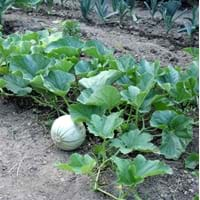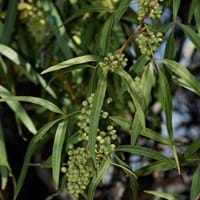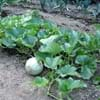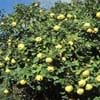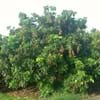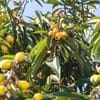Life Span
Annual
Not Available
Origin
Hybrid origin, Africa
Southern Africa, South Africa
Types
Not Available
Not Available
Number of Varieties
Not Available
Habitat
along watercourse, Banks, Barren waste areas
Forest margins, Grassland, Mountains, Pastures, Rocky Ridges, Woods
USDA Hardiness Zone
Not Available
8-11
Sunset Zone
2a, 2b, 3a, 3b, 4, 5, 6, 7, 8, 9, 10, 11, 12, 13, 14, 15, 16, 17, 18, 19, 20, 21, 22, 23, 24
8, 9, 12, 13, 14, 15, 16, 17, 18, 19, 20, 21, 22, 23, 24
Habit
Prostrate/Trailing
Spreading
Flower Color
Yellow
Light Green, Ivory
Flower Color Modifier
Bicolor
Bicolor
Fruit Color
Green, Yellow green
Yellow, Red
Leaf Color in Spring
Green
Green
Leaf Color in Summer
Green
Dark Green
Leaf Color in Fall
Green, Yellow green
Dark Green
Leaf Color in Winter
Light Green
Dark Green
Leaf Shape
Heart-shaped
Lance shaped
Plant Season
Summer, Fall
Spring, Summer, Fall, Winter
Sunlight
Full Sun
Full Sun, Partial Sun, Partial shade
Growth Rate
Very Fast
Medium
Type of Soil
Loam
Loam, Sand
The pH of Soil
Neutral
Neutral, Alkaline
Soil Drainage
Well drained
Well drained
Bloom Time
Early Summer, Summer, Indeterminate
Early Spring
Tolerances
Drought
Pollution, Drought
Where to Plant?
Ground
Ground
How to Plant?
Seedlings
Seedlings, Stem Planting, Transplanting
Plant Maintenance
Medium
Medium
Watering Requirements
Reduce watering once fruit are growing, Water in the early morning hours
Form a Soil ring to water efficiently, Use and maintain water-efficient soaker hoses, Use Mulches to help prevent water loss during hot and windy weather, Water Deeply
In Summer
Lots of watering
Lots of watering
In Spring
Moderate
Moderate
In Winter
Average Water
Average Water
Soil pH
Neutral
Neutral, Alkaline
Soil Type
Loam
Loam, Sand
Soil Drainage Capacity
Well drained
Well drained
Sun Exposure
Full Sun
Full Sun, Partial Sun, Partial shade
Pruning
Remove damaged leaves, Remove dead branches, Remove dead leaves
Prune if you want to improve plant shape, Remove damaged leaves, Remove dead leaves, Remove dead or diseased plant parts
Fertilizers
All-Purpose Liquid Fertilizer
All-Purpose Liquid Fertilizer
Pests and Diseases
Aphids, Cucumber beetles, Fusarium wilt
Red blotch
Plant Tolerance
Drought
Drought
Flowers
Showy
Insignificant
Flower Petal Number
Single
Single
Foliage Texture
Coarse
Fine
Foliage Sheen
Matte
Glossy
Allergy
Dizziness, Mouth itching, Nausea
no allergic reactions
Aesthetic Uses
Not Used For Aesthetic Purpose
Not Used For Aesthetic Purpose
Beauty Benefits
Good for skin, Hair Conditioner, Stops hair loss
Not Available
Environmental Uses
Air purification
Air purification
Medicinal Uses
Antitussive, Digestive, Diuretic, Emetic, Febrifuge, Stomachic
Diarrhea, Dysentry
Part of Plant Used
Fruits, Seeds
Flowers, Leaves
Other Uses
For making oil for cosmetics
Culinary use, Employed in herbal medicine, Used as a dye, Used as a spice, Used in paper industry, Wood is used for making furniture
Used As Indoor Plant
No
No
Used As Outdoor Plant
Yes
Yes
Garden Design
Edible, Fruit / Fruit Tree, Herb / Vegetable, Vine
Screening / Wind Break, Shade Trees, Street Trees, Topiary / Bonsai / Espalier
Botanical Name
CUCUMIS melo 'Burpees Early Hybrid'
RHUS lancea
Common Name
Crenshaw Melon
African Sumac
In Hindi
खरबूजा
अफ्रीकी एक प्रकार का पौधा
In German
Zuckermelone
African sumac
In French
Melon
sumac africaine
In Spanish
Crenshaw Melon
zumaque africano
In Greek
Crenshaw Melon
Αφρικανική σουμάκι
In Portuguese
Crenshaw Melon
sumac africano
In Polish
Crenshaw Melon
afrykański sumaka
In Latin
Crenshaw Melon
African sumac
Phylum
Magnoliophyta
Not Available
Class
Magnoliopsida
Not Available
Order
Cucurbitales
Sapindales
Family
Cucurbitaceae
Anacardiaceae
Clade
Angiosperms, Eudicots, Rosids
Angiosperms, Eudicots, Rosids
Tribe
Not Available
Not Available
Subfamily
Not Available
Anacardioideae
Number of Species
Not Available
Importance of Crenshaw Melon and African Sumac
Want to have the most appropriate plant for your garden? You might want to know the importance of Crenshaw Melon and African Sumac. Basically, these two plants vary in many aspects. Compare Crenshaw Melon and African Sumac as they differ in many characteristics such as their life, care, benefits, facts, etc. Every gardener must at least have the slightest clue about the plants he wants to plant in his garden. Compare their benefits, which differ in many ways like facts and uses. The medicinal use of Crenshaw Melon is Antitussive, Digestive, Diuretic, Emetic, Febrifuge and Stomachic whereas of African Sumac is Diarrhea and Dysentry. Crenshaw Melon has beauty benefits as follows: Good for skin, Hair Conditioner and Stops hair loss while African Sumac has beauty benefits as follows: Good for skin, Hair Conditioner and Stops hair loss.
Compare Facts of Crenshaw Melon vs African Sumac
How to choose the best garden plant for your garden depending upon its facts? Here garden plant comparison will help you to solve this query. Compare the facts of Crenshaw Melon vs African Sumac and know which one to choose. As garden plants have benefits and other uses, allergy is also a major drawback of plants for some people. Allergic reactions of Crenshaw Melon are Dizziness, Mouth itching and Nausea whereas of African Sumac have no allergic reactions respectively. Having a fruit bearing plant in your garden can be a plus point of your garden. Crenshaw Melon has showy fruits and African Sumac has showy fruits. Also Crenshaw Melon is not flowering and African Sumac is not flowering . You can compare Crenshaw Melon and African Sumac facts and facts of other plants too.
